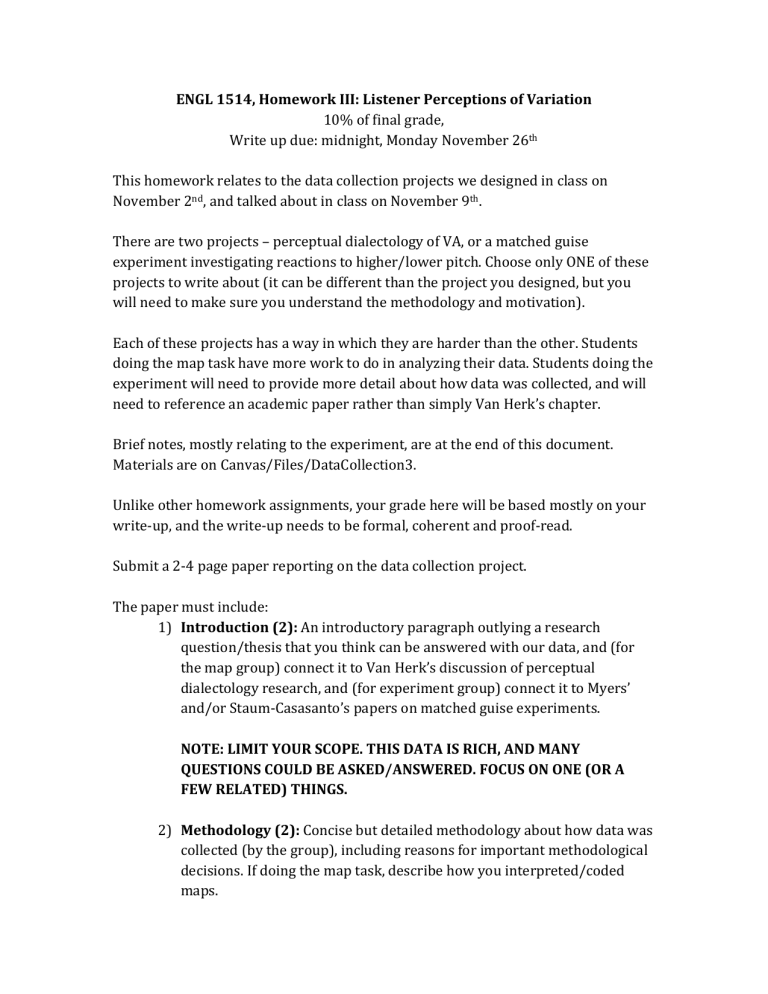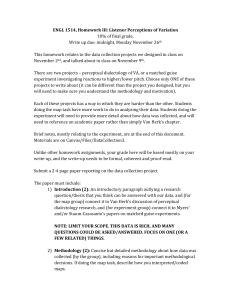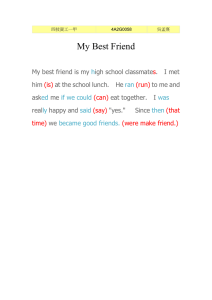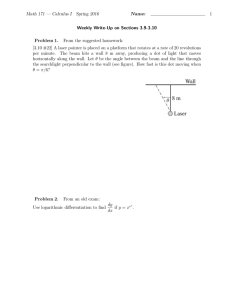
ENGL 1514, Homework III: Listener Perceptions of Variation 10% of final grade, Write up due: midnight, Monday November 26th This homework relates to the data collection projects we designed in class on November 2nd, and talked about in class on November 9th. There are two projects – perceptual dialectology of VA, or a matched guise experiment investigating reactions to higher/lower pitch. Choose only ONE of these projects to write about (it can be different than the project you designed, but you will need to make sure you understand the methodology and motivation). Each of these projects has a way in which they are harder than the other. Students doing the map task have more work to do in analyzing their data. Students doing the experiment will need to provide more detail about how data was collected, and will need to reference an academic paper rather than simply Van Herk’s chapter. Brief notes, mostly relating to the experiment, are at the end of this document. Materials are on Canvas/Files/DataCollection3. Unlike other homework assignments, your grade here will be based mostly on your write-up, and the write-up needs to be formal, coherent and proof-read. Submit a 2-4 page paper reporting on the data collection project. The paper must include: 1) Introduction (2): An introductory paragraph outlying a research question/thesis that you think can be answered with our data, and (for the map group) connect it to Van Herk’s discussion of perceptual dialectology research, and (for experiment group) connect it to Myers’ and/or Staum-Casasanto’s papers on matched guise experiments. NOTE: LIMIT YOUR SCOPE. THIS DATA IS RICH, AND MANY QUESTIONS COULD BE ASKED/ANSWERED. FOCUS ON ONE (OR A FEW RELATED) THINGS. 2) Methodology (2): Concise but detailed methodology about how data was collected (by the group), including reasons for important methodological decisions. If doing the map task, describe how you interpreted/coded maps. 3) Data summary (.5): A summary of the (subset?) of data you are looking at. How many participants, any relevant demographic breakdowns, etc. 4) Results (2): Provide numbers and/or images to answer your research question. These can be graphs I made, or scans of classmates’ maps (please do not show me every map you analyzed. Rather choose maps that best illustrate points you’re making). Make sure to explain any visuals you provide. Feel free to consult the raw data files. NOTE: Don’t use the word “significant” unless you are doing significance testing (which is really unlikely unless you’re hardcore?) 5) Conclusion (1): What did we learn about perceptions of language from this study? What’s the takeaway message. Is it surprising or expected given what you’ve learnt in this class? 6) References (.5): In APA or MLA format, cite the paper(s) or book(s) you reference in your write up. (This may just be van Herk’s book). 7) Addendum (1): Outside of the formal write up, I want you to write a more casual note to me that covers two things. First, how did you, specifically, collect data for this study. Where/how did you advertise, and/or who did you ask? How do you think your choices here could have affected results? (If you didn’t collect data, say so). Second, I want you to note how you would improve the study if you were to run it again. Be thoughtful – saying you’d get more participants is insufficient. Matched Guise Study: Design Notes • • • • Feel free to follow the link and pretend to take the study if that helps you remember/describe methodology. Three female classmates were recorded. I shifted their pitch up by 40Hz (the ‘high’ condition), down by 40 Hz (the ‘low’ condition), and there was also their regular, untouched recording (the ‘normal’ condition). This means there are 9 files total (3 speakers * 3 guises). Participants heard only 6 of these files. They definitely heard 2 of each speaker, but it was randomized which versions they heard. This means that it’s possible some participants literally heard the same version twice. • • Some participants did not answer all questions about a speaker (for example, they rated them on intelligence, but not on friendliness, or just rated their age and gender, but not the scales). Your analysis can include, or entirely focus on, commentary we received. Map Task: Analysis Advice • • Focus on boundaries or descriptions, but probably not on both. o Where are differences being marked? o What are the comments about a particular area? o What are the labels being used to name dialects/areas? o What linguistic features are people aware of? It’s okay to focus on a subset of maps – either a random number (like 30), or limiting it to a particular type of participant (from NOVA, male, etc.)


